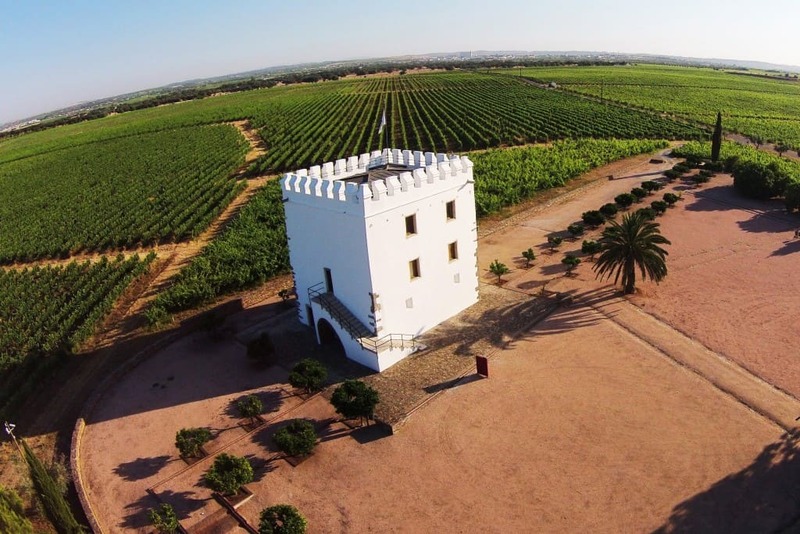The many historic castles, hilltop forts and towers scattering the Portuguese countryside weren’t just built for fun.
From the Lucitanian Celts and their castros through the Moors, the re-conquistadors and Knights Templar, to the centuries of defence on the long border with Spain, these fortifications are monuments to wars gone by. But among them stands one tower erected as an expression of new found power and to symbolise the start of a new family lineage – a new beginning.
The Esporão Tower was built between 1457 and 1490 by a nobleman from a high-society family with royal connections and was used to plant a flag of possession and intent. And centuries later the Esporão wine estate has been at the heart of something huge – a symbol of change and new beginnings which gave rise to a new generation of Portuguese winemakers.

The fifteenth century knight Álvaro Mendes de Vasconcelos was a man with big ambitions – much like José Roquette, the Portuguese banker and businessman who bought the Esporão wine estate with his partner Joaquim Bandeira in 1973. A year later they lost it to the revolution and it was only returned on the condition the grapes went to the local cooperative.
It wasn’t until the 1980s when what is now one of Alentejo’s most widely known wineries began re-planting, modernising and producing great wine.
“We started building one of the most famous and beautiful wineries in Portugal, but it was very difficult to build in three months: below the ground with big tunnels – it was crazy,” said Luís Duarte, who joined Esporão in 1987 straight out of Portugal’s very first oenology class. A few years later he was joined by David Baverstock – an Australian winemaker who by then had married and lived in Portugal ten years.
“The winery was brilliant – it was really well designed. I mean, what they did to this hillside was insane,” said David who only recently left Esporão after 30 years. “They carved out the middle of it, they put in the concrete structures, and then they put the earth back on top again. Everything was done by gravity.”
Deep below the ground it’s as impressive today with its refreshingly cool temperature despite the intense Alentejo heat, and the cavernous cellar space resembles a cathedral or a subterranean football field. “Or a metropolitan station – an underground station?” suggested Sandra Alves, the third former Esporão winemaker we spoke to for this history lesson, and who gave us a tour of the iconic winery.
It’s a great place to visit in Reguengos de Monsaraz, and well set up for visitors, with tours, tastings and restaurant with a Michelin star and a Michelin green star for sustainability.
José Roquette’s son João took over the running of the winery and the family made another ambitious step in the 2000s when they decided the whole estate should become organic.
With more than 600ha of vines, Esporão is now one of the top ten largest organic vineyards in the world.
Esporão produces a whole range of wines in Alentejo from mass-market Monte Velho to “Torre” wines only produced in exceptional years, but all feature the now restored tower, as their website puts it: “having now regained its former splendour and importance.” And that’s a good allegory for the fortunes of Portugal and Alentejo’s wines that follow the story of Esporão and our three winemakers.
“In the early days, when I first came over here, it was very hit or miss,” said David Baverstock. “You’d buy red wine in a supermarket and it was maybe a little bit fizzy, a bit gassy or dirty or something. There were a lot of basic winemaking faults back then.
“A lot of it was just sort of handed down from generation to generation, there wasn’t a lot known about the grape varieties. And suddenly, they realised they’ve got these 250 indigenous grape varieties that no other country in the world has.”
Portugal’s entry into the then European Economic Community (EEC) in 1986 made a huge difference. Money poured in for everything including winemaking from research to temperature-controlled fermentation vessels.
“We started to follow the ideas that David brought from Australia – from the new world,” said Luís Duarte, of the time when Esporão started to experiment. “We belong to the old world of wine but we are very new in terms of our knowledge.”
And Sandra Alves describes Alentejo’s wine as really drinkable, intense wine and really fruity. “It’s almost exotic for an American market but at the same time, it’s gastronomic as well. I would say that you need to taste to understand and you need to come here to understand what I’m talking about.”
Alastair Leithead is a former BBC correspondent now living in Portugal. He writes the blog Off-Grid and Ignorant in Portugal and a wine blog called The Big Portuguese Wine Adventure.
